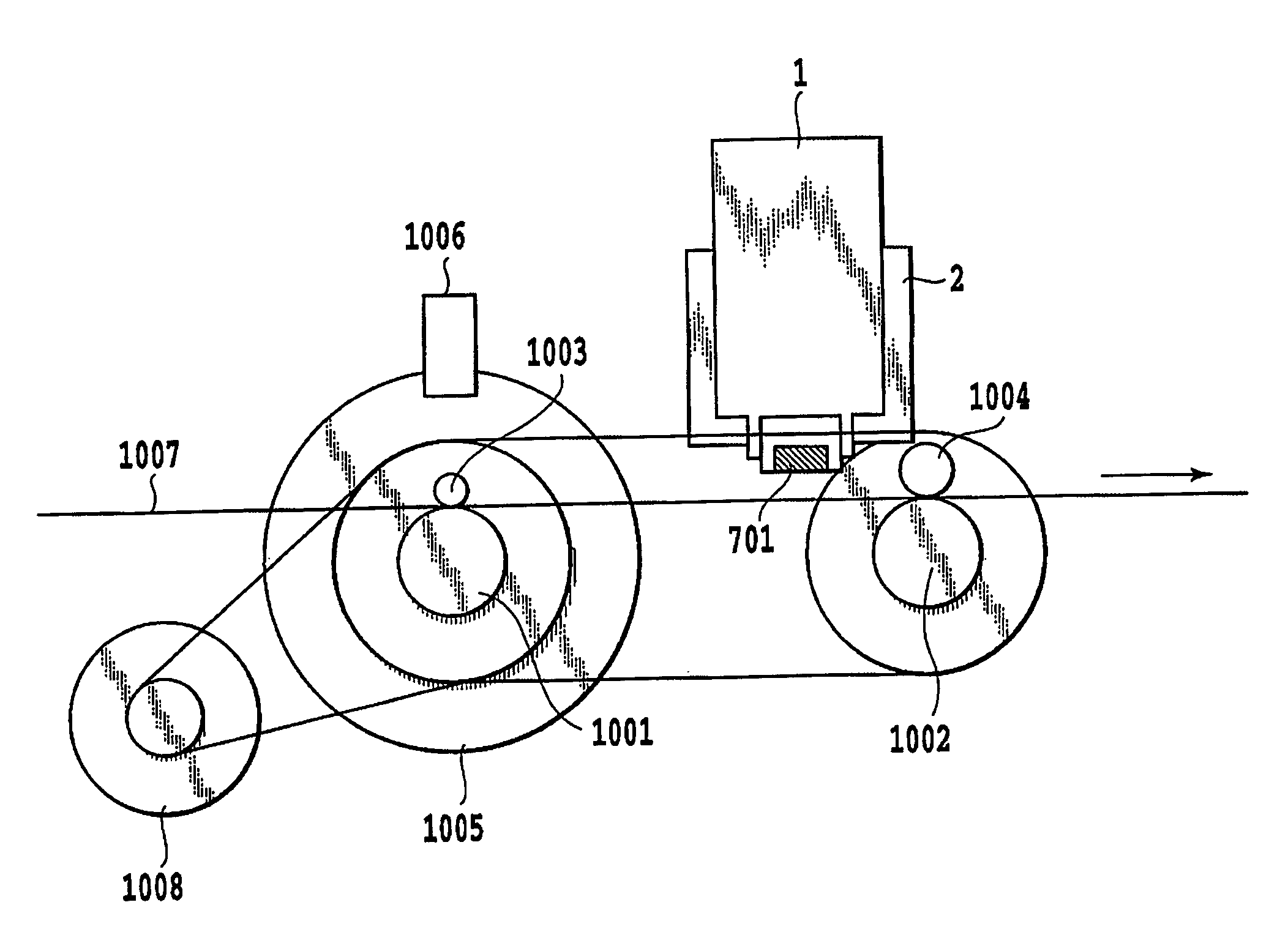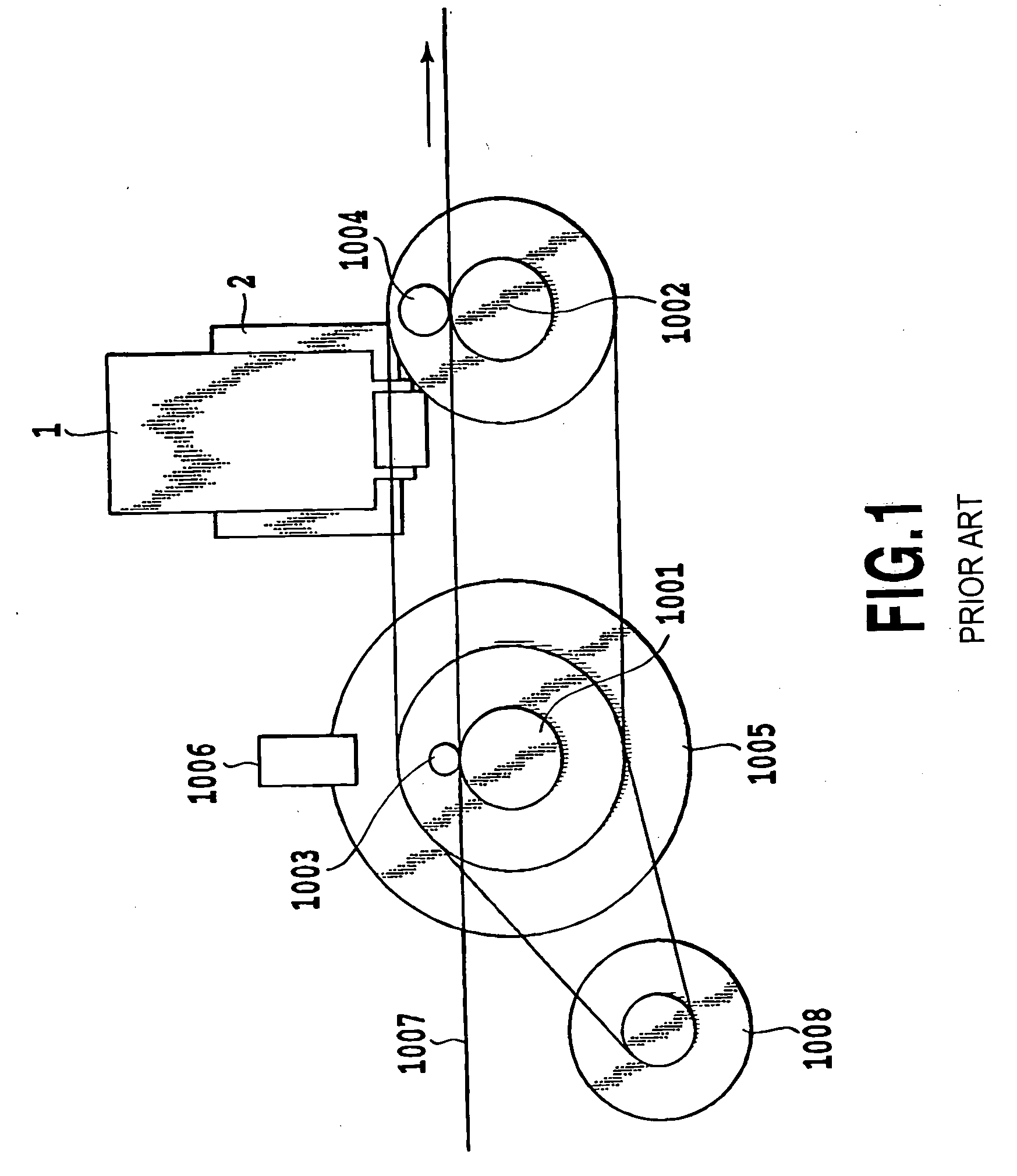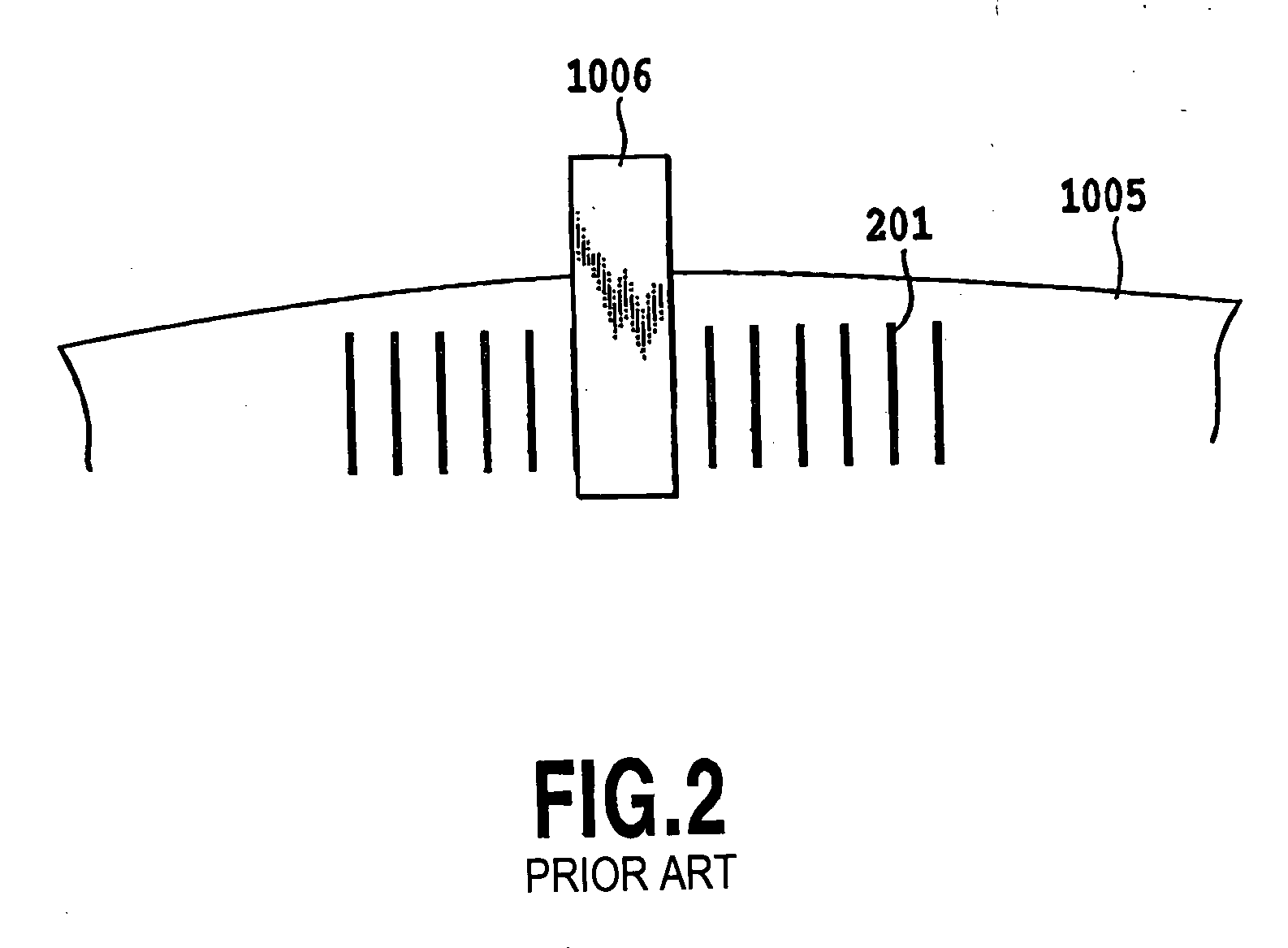Printing apparatus with first and second measuring means for obtaining a conveying amount of a printing medium
a technology of conveying amount and printing medium, which is applied in the direction of spacing mechanism, thin material processing, printing, etc., can solve the problems of high cost, unstable speed control, and difficulty in speed control carried out in accordance with this pulse signal, so as to eliminate the conveyance error of the conveyor roller and high speed
- Summary
- Abstract
- Description
- Claims
- Application Information
AI Technical Summary
Benefits of technology
Problems solved by technology
Method used
Image
Examples
example 1
[0065]FIG. 9 is a flow chart for illustrating the processing of CPU 101 for controlling the conveyance of the printing medium. FIGS. 10A to 10E are illustrations of the conveyance of the printing medium at the respective timing.
[0066]With reference to these drawings, upon starting the printing, the supply of the printing medium 1007 is initiated at step 1. The printing medium 1007 is conveyed in the direction indicated by an arrow in FIG. 10A.
[0067]At step 2, it is determined whether or not a front end of the printing medium 1007 is detected by the paper-end sensor 33. The supply of the printing medium at step 1 continues until the front end detected at step 2.
[0068]When the front end of the printing medium 1007 is detected at step 2, the routine proceeds to step 3 at which the control of a conveying speed and a position is commenced by the rotational angle sensor 1006. This stage corresponds to FIG. 10B.
[0069]At step 4, it is determined whether or not the existence of the printing ...
example 2
[0075]In this example, while the conveying distance of the printing medium is corrected in accordance with kinds thereof as described in Example 1, a position of the conveyed printing medium is determined and the printing medium is made to stop at higher accuracy than the resolution of the rotational angle sensor 1006.
[0076]The resolution of the moving distance reading sensor 701 used in this example is higher than the resolution of the rotational angle sensor 1006. Accordingly, it is possible to set the conveyance resolution and then the printing resolution at a higher level while maintaining the printing apparatus in a small size without enlarging a diameter of the code wheel 1005 used for the rotational angle sensor 1006.
[0077]The actual operation will be described when the conveying distance is larger than a predetermined value, the conveyance control is carried out by the rotational angle sensor 1006 until the conveying distance reaches a value which is closer to the target val...
example 3
[0079]In this example, a control method carried out at a low conveying speed will be described, which is difficult to be controlled by the rotational angle sensor 1006 having a lower resolution, while correcting the conveying distance of the printing medium in accordance with kinds thereof as described in Example 1.
[0080]In the rotational angle sensor 1006 outputting a pulse at a timing when the conveyor roller 1001 rotates at predetermined pitches, when the conveying speed; i.e., the roller rotational speed varies, an interval between the adjacent pulses becomes discrete. Even in such a state, it is possible to relatively favorably carry out the algorithm for controlling the speed, if the rotational speed is maintained at a certain level. However, since the rotational speed is considerably lowered immediately before the roller stops at a predetermined position, the control becomes very unstable.
[0081]This phenomenon will be described in more detail below. Immediately before the pri...
PUM
 Login to View More
Login to View More Abstract
Description
Claims
Application Information
 Login to View More
Login to View More - R&D
- Intellectual Property
- Life Sciences
- Materials
- Tech Scout
- Unparalleled Data Quality
- Higher Quality Content
- 60% Fewer Hallucinations
Browse by: Latest US Patents, China's latest patents, Technical Efficacy Thesaurus, Application Domain, Technology Topic, Popular Technical Reports.
© 2025 PatSnap. All rights reserved.Legal|Privacy policy|Modern Slavery Act Transparency Statement|Sitemap|About US| Contact US: help@patsnap.com



